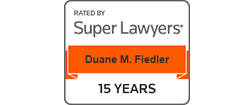Losing a loved one is an incredibly painful experience, and when that loss is the result of someone else’s negligence, it can be even more devastating. In New York, as in other states, the legal system recognizes wrongful death as a civil action that allows surviving family members to seek justice and compensation for the loss of their loved one. Here is a guide to help you navigate the complexities of a wrongful death claim.
Understanding Wrongful Death in New York
In New York, wrongful death by law (New York Estates, Powers, and Trusts Law EPT § 5-4.1) occurs when the following five elements are present in the situation:
- An individual died;
- Their death was caused by another party’s negligence;
- Had the deceased victim survived, they could have pursued a personal injury lawsuit in court;
- The deceased’s surviving family suffered losses as a result of the death.
This can include situations such as car accidents, medical malpractice, workplace accidents, or acts of violence.
Eligibility to File
If there is evidence of these elements, the personal representative of the deceased’s estate has the ability to file a wrongful death claim on behalf of surviving heirs, beneficiaries, or devisees.
Statute of Limitations
It is crucial to be aware of the statute of limitations for filing a wrongful death claim in New York. Generally, the claim must be filed within two years from the date of the deceased person’s death.
How To Initiate a Wrongful Death Claim
Hiring the services of an experienced Westchester County personal injury lawyer is a pivotal first step. A knowledgeable attorney can guide you through the legal process, assess the viability of your claim, and advocate for your rights.
Gather Evidence
Building a strong case requires gathering evidence to establish negligence or wrongful conduct. This may involve collecting medical records, accident reports, witness statements, and any other relevant documentation.
Determine Damages
Assess the damages suffered as a result of the wrongful death, including economic losses such as medical expenses, funeral and burial expenses, and loss of expected income, as well as non-economic losses like loss of companionship.
The Legal Process
File the Complaint
Your attorney will help you prepare and file the wrongful death complaint, outlining the details of the case, the damages sought, and the legal basis for the claim. The complaint is then served on the responsible party.
Discovery
Both parties engage in the discovery phase, where they exchange relevant information and evidence. This may involve depositions, interrogatories, and requests for documents.
Settlement Negotiations
Often, parties may engage in settlement negotiations to reach a resolution without going to trial. Your attorney will work to secure a fair and just settlement that compensates for the losses suffered.
Trial
If a settlement cannot be reached, the case proceeds to trial. During the trial, each side presents its case, witnesses are examined, and evidence is presented. A judge or jury then decides the outcome.
How To Prove A Wrongful Death Claim In New York
The personal representative of the deceased’s estate must have evidence of the following to successfully recover compensation:
Death of a Human Being
The first and most fundamental element is demonstrating the death of a human being. The plaintiff (representative of the deceased’s estate) must establish that an individual has passed away as a result of the incident in question.
Breach of Duty
It must be demonstrated that the defendant owed a duty of care to the deceased and that this duty was breached. This could include actions such as reckless driving, medical malpractice, workplace negligence, or any other negligent behavior.
Causation
Proving causation is crucial. The plaintiff must establish a direct link between the defendant’s (at-fault party’s) negligent or intentional actions and the death of the deceased. This involves demonstrating that the defendant’s conduct was a substantial factor leading to the fatal outcome.
Damages
Establishing the damages suffered by the surviving family members is essential. This includes both economic damages, such as medical expenses and lost income, and non-economic damages, such as pain and suffering or loss of companionship.
 Because Relationships Matter
Because Relationships Matter 















